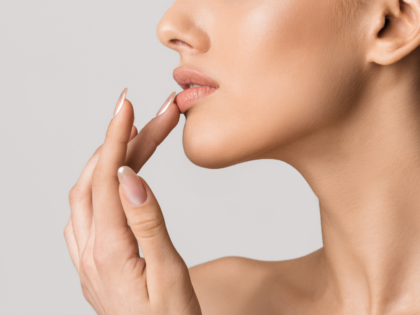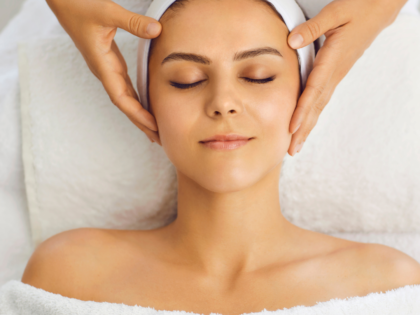“Herbal Kajal and Eye Care: Ayurvedic Wisdom for Beautiful, Healthy Eyes”

In the world of beauty and wellness, Ayurveda offers holistic solutions that go beyond surface-level care. One of the most cherished Ayurvedic practices is the use of herbal kajal, a natural eye cosmetic that enhances beauty while promoting eye health. This article delves into the benefits of herbal kajal and Ayurvedic eye care, offering insights into ancient practices that ensure your eyes remain beautiful, bright, and healthy.
The Significance of Eyes in Ayurveda
In Ayurveda, the eyes are considered one of the most vital sense organs, referred to as “Netra”. They are governed by the fire element, Pitta dosha, which is responsible for vision. Ayurvedic texts emphasize that maintaining eye health is essential not only for vision but for overall well-being. Prolonged screen time, pollution, and improper sleep can strain the eyes, making Ayurvedic eye care more relevant than ever.
What is Herbal Kajal?
Herbal kajal, also known as Kohl, is a natural cosmetic traditionally used to define the eyes. Unlike commercial products that may contain harmful chemicals, herbal kajal is made from ingredients like soot, almond oil, castor oil, ghee, and medicinal herbs. These natural components not only enhance the beauty of the eyes but also provide therapeutic benefits.
Key Ingredients in Herbal Kajal:
- Soot (Kajal Bhasma): Collected from a flame fueled by castor oil, it helps cool and soothe the eyes.
- Castor Oil or Almond Oil: Provides nourishment and keeps the kajal smooth and easy to apply.
- Ghee (Clarified Butter): Acts as a cooling agent and protects against dryness.
- Camphor (Kapur): Known for its cooling properties, camphor reduces eye irritation.
- Triphala: A blend of three fruits, it detoxifies and strengthens eye health.
Benefits of Herbal Kajal for Eye Health
1. Natural Cooling Effect
Herbal kajal is known for its soothing and cooling properties. Ingredients like camphor and ghee help reduce redness, burning sensations, and irritation caused by dust or pollution.
2. Protection from Infections
The antimicrobial properties of ingredients like camphor and ghee protect the eyes from bacterial and fungal infections, reducing the risk of conjunctivitis and other eye ailments.
3. Nourishment and Hydration
Oils like castor oil and almond oil provide deep nourishment to the delicate skin around the eyes. They prevent dryness, keeping the eyes moisturized and healthy.
4. Detoxification
Herbal kajal aids in removing toxins and impurities from the eyes, which helps in maintaining clear vision and reducing dark circles.
5. Enhances Beauty Naturally
In addition to health benefits, herbal kajal enhances the natural beauty of the eyes, giving them a dramatic, defined look without the risks associated with chemical-based cosmetics.
How to Apply Herbal Kajal Properly
To maximize the benefits of herbal kajal, it’s important to apply it correctly:
- Cleanse Your Eyes: Wash your face and eyes with cool water to remove any dirt or impurities.
- Use a Clean Applicator: Always use a clean finger, cotton swab, or a traditional applicator to avoid contamination.
- Gentle Application: Apply the kajal to the inner waterline (lower eyelid) or just outside the lash line for a bolder look.
- Massage Around the Eyes: Gently massage the skin around the eyes with a drop of almond oil or ghee after applying kajal to enhance absorption and nourishment.
Ayurvedic Tips for Healthy Eyes
Herbal kajal is just one part of Ayurvedic eye care. To ensure holistic eye health, incorporate these tips into your routine:
1. Practice Eye Exercises
Simple exercises like palming (rubbing palms together and placing them over closed eyes) and eye rotations improve blood circulation and reduce eye strain.
2. Use Rose Water Eye Wash
Rose water is an excellent natural toner for the eyes. It helps reduce redness, puffiness, and irritation. Splashing your eyes with pure rose water can refresh and rejuvenate them.
3. Consume Eye-Friendly Foods
A diet rich in Vitamin A, beta-carotene, and antioxidants promotes eye health. Include foods like carrots, spinach, sweet potatoes, almonds, and ghee in your daily meals.
4. Triphala Eye Wash
Triphala, a revered Ayurvedic formulation, is excellent for eye health. Boil Triphala powder in water, cool it, and use it as an eye wash to cleanse and detoxify the eyes.
5. Adequate Sleep
Ayurveda emphasizes the importance of proper sleep (7-8 hours) for eye health. Sleep helps the eyes recover from daily stress and ensures they remain bright and vibrant.
DIY Herbal Kajal Recipe
If you’re interested in making herbal kajal at home, here’s a simple recipe:
Ingredients:
- 1 small lamp or diya
- 1 teaspoon castor oil
- 1 clean cotton wick
- 2 teaspoons ghee (clarified butter)
- A small steel plate
Instructions:
- Light a small lamp using the cotton wick and castor oil.
- Place the steel plate above the flame, ensuring the flame doesn’t touch it directly.
- Allow the soot to collect on the underside of the plate.
- Once cooled, scrape the soot into a clean container.
- Add a few drops of ghee to the soot and mix it well to form a smooth paste.
- Your homemade herbal kajal is ready to use!
Precautions When Using Herbal Kajal
- Check for Allergies: Ensure that none of the ingredients cause irritation or allergic reactions.
- Use Fresh Kajal: Herbal kajal is best when fresh. Avoid using stale or old kajal to prevent infections.
- Avoid Excessive Use: Use kajal sparingly to avoid clogging the tear ducts or causing discomfort.
Conclusion
Herbal kajal, rooted in Ayurvedic tradition, offers a blend of beauty and health benefits. By using natural ingredients, it nourishes and protects the eyes while enhancing their beauty. Coupled with Ayurvedic eye care practices, herbal kajal is a timeless solution for maintaining healthy, radiant eyes. Embrace this ancient wisdom to give your eyes the care they deserve—naturally, beautifully, and holistically.





